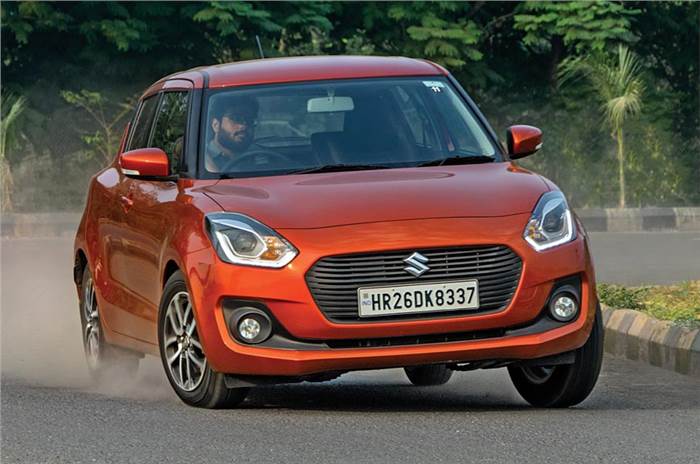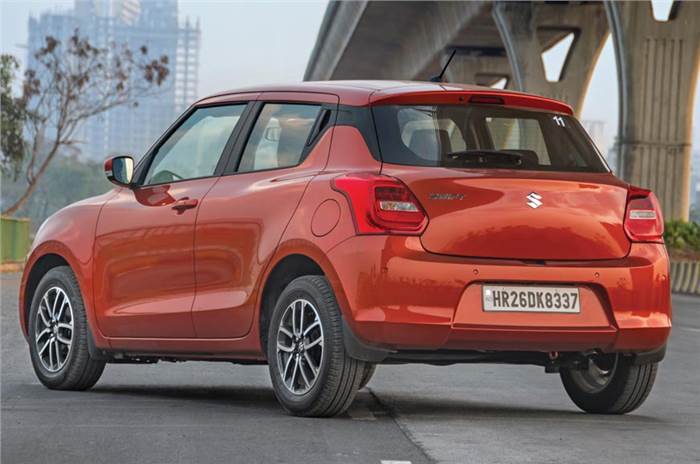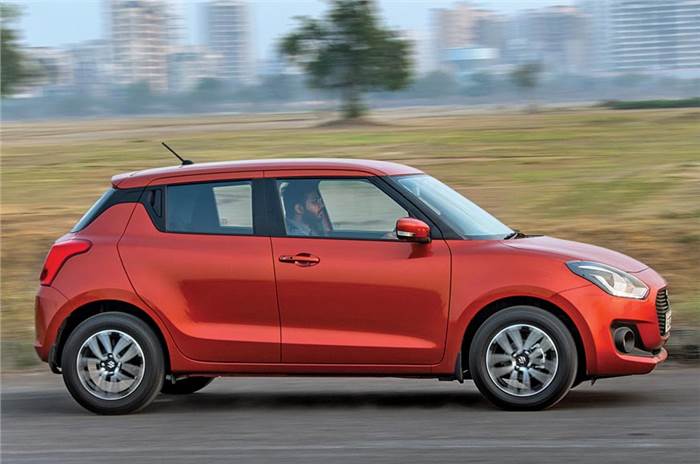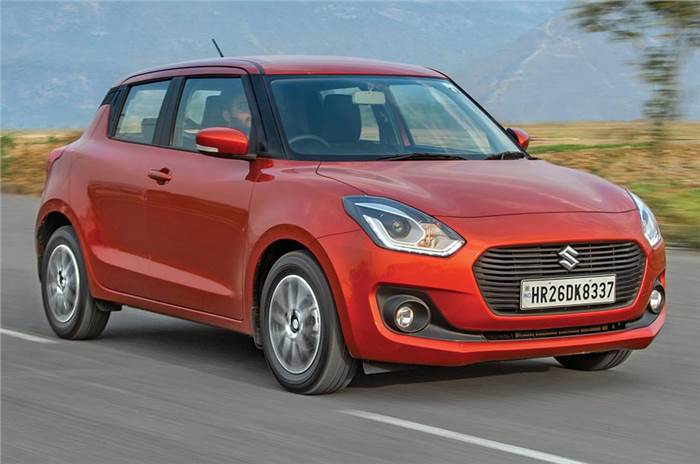2018 Maruti Suzuki Swift review, road test
The Swift has long been India’s most-loved hatchback. Does the bond deepen with the new third-generation model?
Published on Mar 29, 2018 06:00:00 AM
1,36,790 Views
Follow us on
Grip and body control are great but the lifeless steering is a killjoy.

Just like its predecessors, the latest Swift has a youthful air about it.

Despite its light weight, the Swift feels confident at high speeds and stability is good.

Swift is attractive but top-spec versions' jazzier wheels and LED headlights make a big difference.
So how much of a difference can a 100kg drop in weight make to a small car’s performance? If you see the new Swift petrol-manual’s numbers in light of the old car’s, the answer is ‘a lot’. Where the old Swift did the 0-100kph dash in 14.24sec, the new one does it in a brisk 11.96sec. The more pertinent gains, though, are in city driving scenarios. Be it from 10-30kph in second gear, 30-50kph in third, or 50-70kph in fourth, the new Swift is quicker by a considerable margin. And that’s despite the new Swift’s slightly taller gearing in third, fourth and fifth. The variable valve timing-equipped 1.2-litre, four-cylinder petrol engine makes about the same power as it did on the older model (83hp and 113Nm versus 84hp and 115Nm on the last Swift), but with considerably less mass to haul, it just feels a lot more alive in this application. It’s peppy at low speeds, more responsive than your average 1.2 petrol at middle revs, and gets better and better the more you wind it. The semi-throaty note also goes with the engine’s character, and refinement levels, in general, are excellent; just wish the engine was allowed to rev more than 6,200rpm – it always feels like it’s got more to give. Easy-to-use, and allied to a light clutch, this version’s five-speed manual gearbox also gets a thumbs-up. Suffice to say, this is the engine-gearbox to go for if you enjoy driving.
The diesel Swift, on the other hand, is clearly the version for those more interested in kpl than kph. Its 1.3-litre, four-cylinder, turbo-diesel engine makes the same power and torque as on the old car (75hp and 190Nm), but with gearing being significantly taller here (the final drive is different) in the interest of efficiency, there are no performance gains borne out of the weight reduction. In fact, forget the quicker Ford Figo and Hyundai Grand i10 diesels, the new Swift diesel is actually slower than its predecessor in the higher gears.
If you are familiar with the old Swift diesel, you’ll notice how the engine feels a bit laid-back here. At low engine speeds, performance is adequate to keep up with the flow of traffic; but you’ll probably need a downshift to pull off a quick overtake. The engine gets into its stride at 2,000rpm, but even so, there’s no sudden surge in power as we’ve come to expect from this unit, just readier access to power. Keep the engine spinning around this mark and you’ll find performance more than agreeable. Mid-range performance is good but the tall gearing means the motor doesn’t rev quite as quickly as we know it to. On the positive side, the taller gearing has endowed the Swift diesel with the long legs suited for relaxed highway cruising – something which high-mileage users are sure to appreciate. The new Swift’s diesel engine spins at a relatively relaxed 2,300rpm at 100kph in fifth gear as opposed to a busier 2,600rpm in the old Swift. Notably, you hear less of the engine in the new Swift diesel, but the Fiat engine’s characteristic clatter is still audible at most times.
Like the petrol Swift, the diesel’s five-speed manual gearbox is light and the clutch also doesn’t require much effort either. But what of the automatics? The good news is that the Swift automatics are highly efficient. The not-so-good news is that they use automated manual transmissions, which are the least sophisticated of automatic transmission types.
If you can make your peace with the fact that there are smoother automatic options out there, you actually won’t mind the Swift petrol-AMT. The gearbox is quite in tune with driving style, and actually does a good job of swapping cogs in typical city conditions. Creep mode works well enough too, so you really can enjoy the convenience of clutch-free travel. It’s only when you press down harder on the throttle pedal that the system gets caught out, taking some time to shift to the right gear. The easy way to work around this issue is to use the tiptronic function and shift gears manually via the gear lever.
The diesel-AMT is far less impressive. For starters, the car doesn’t gently roll forward but rather leaps forward in creep mode which becomes an issue when negotiating bumper-to-bumper traffic. The diesel’s gearbox also has a tendency to mistime shifts. So, you often get a gearshift when you don’t expect it, and what follows is that head nod from the long pause between shifts, which is far more prominent here than on the petrol. Manual mode helps, but, frankly, for an auto, the diesel’s AMT doesn’t feel as responsive as it ought to.
Copyright (c) Autocar India. All rights reserved.





Comments
Member Login
Personal Details
No comments yet. Be the first to comment.